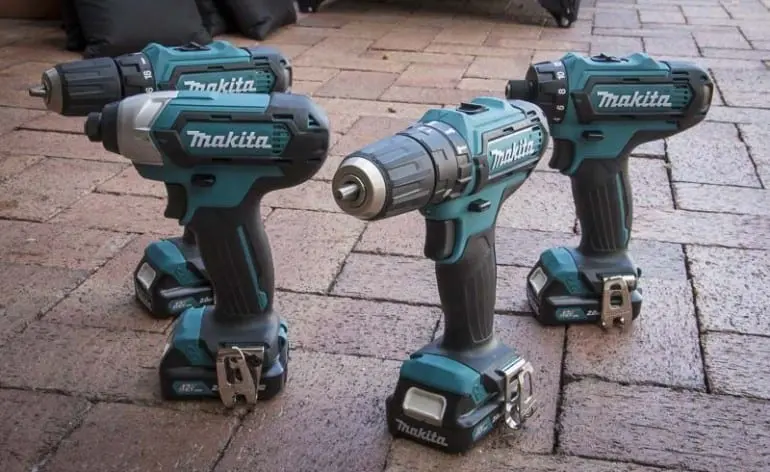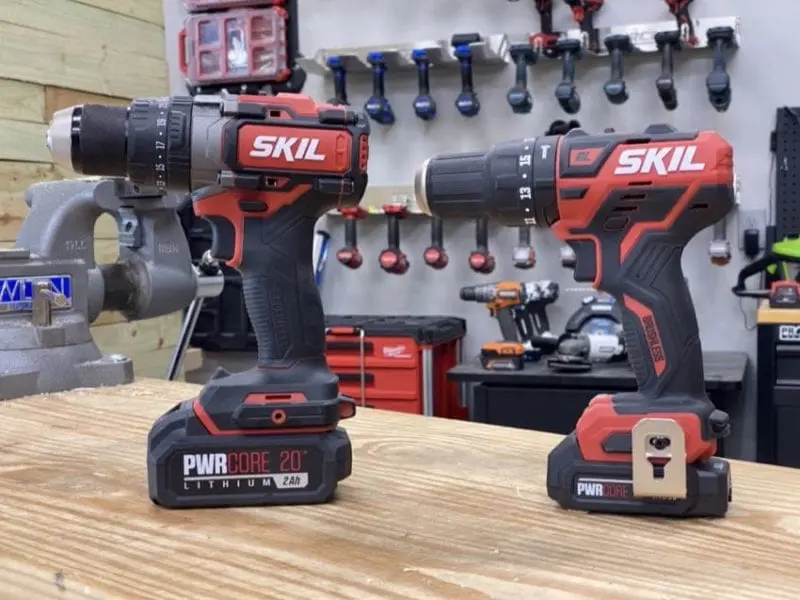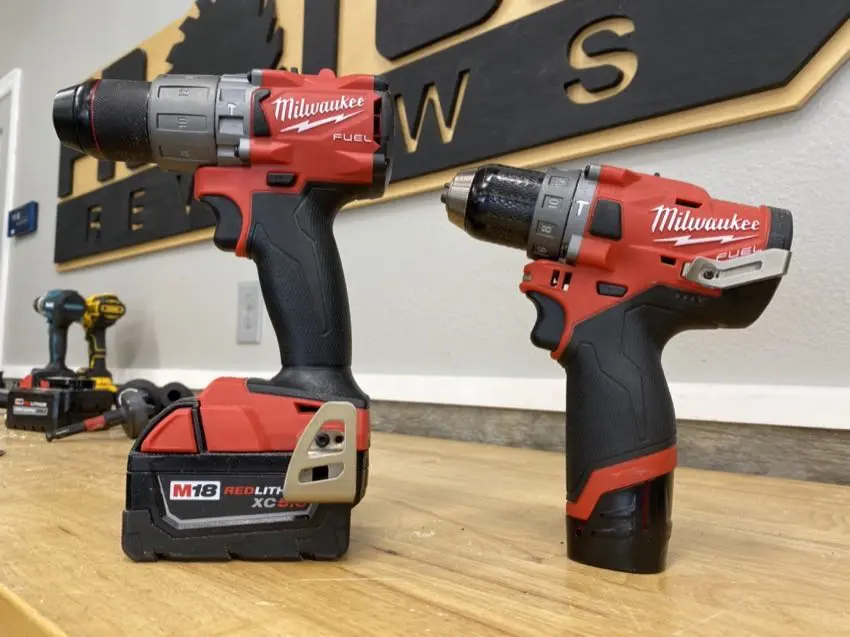Each year, manufacturers dazzle us with new tool innovations and battery technology. We want more run-time, more power, and more overall tool longevity. By and large, major tool manufacturers are delivering those things. Today, the best cordless drills far exceed the capabilities of corded tools. Professionals are beginning to regard their 18V tools as their primary option instead of just supplemental tools. Tool innovation continues to highlight the similar capabilities of 12-volt vs 18-volt. It’s remarkable to see, and the tools are exciting to use. But more power isn’t our only consideration. In the 12V vs 18V equation, we can quickly get to a point where we experience diminishing returns.
We get there not because of the power, but because of factors accompanying the power. After all, there’s no need to kill a fly with a sledgehammer. Here are some of the biggest considerations when comparing 12-volt vs 18-volt tools.
12-Volt vs 18-Volt Tools – When You Don’t Need Max Power
It’s obvious that 18-volt tools have more power than their 12-volt brethren. However, 12V vs 18V isn’t just about power. You simply may not need all that torque.
What? Blasphemy! Yeah, well…you don’t always need the most power. Sometimes you just want to drive screws.
A professional carpenter or installer can likely use a 12-volt tool all day long without needing an 18V tool. Thanks to lithium-ion technology, today’s 12-volt drills and impact drivers perform a lot like yesterday’s 18-volt tools. Some even seem to fall somewhere in between the two categories.
However, what if you’re in production performing heavy-duty, high-stress tasks? Then an 18-volt platform might be better suited for the job. For many users, however, that 12-volt power tool gives you plenty of power for most of the work you might toss at it.
Tool Weight Matters
12-volt tools certainly hold an advantage with their lighter weight. If you often find yourself in crawlspaces, attics, working overhead, or with your arms extended, 12V tools have the advantage…hands down. If the power level gives you what you need, you’ll want to consider the 12-volt platform.

Comparing 12V vs 18V Tool Size
Unless you drive a dump truck, space is probably limited. Your best shop tool box or truck bed toolbox is prime real estate. If your tools are smaller, you can carry a wider variety of tools for jobs you may encounter. You could carry a 12V impact driver, 12V drill, one-handed recip saw, and even a circular saw (and probably more) in a reasonably sized toolbox or backpack and be ready for just about anything. An 18V set would be considerably larger and heavier.

With a 12-volt kit, you won’t find yourself crawling out from under a house or climbing down from the attic to make multiple trips to the truck since everything can fit in one bag.
12-Volt vs 18-Volt Tools Charge Time
We’ll have to be patient while we wait for 1-minute battery chargers to hit the market. Until then, an advantage of 12-volt batteries is faster charge times. Looking at a compact 12V battery pack, in general, you only have to charge 3 batteries. Compare that to the 5 or 6 cells found in an 18V compact battery.
Impressively, Fast charging technology helps close the gap on some 18-volt platforms. With most charging technology advances occurring on the 18-volt platform, the big boys may dominate this area on all sides.
18V vs 12V Run-Time
Grab a 25-pound box of drywall screws and some 2×4 lumber, and start driving them. You can likely work through lunch by the time your drill runs out of juice. Would you rather have the 12-volt drill or an 18-volt model? It depends.
Given the same task, 18-volt batteries are going to run much longer than 12-volt. That’s especially true now that 10 Ah batteries and even 12 Ah batteries are hitting the scene. You probably don’t want to hold all that weight in a handheld tool, however.
18V tools weigh more and can run longer. In exchange, they can also drive heavier loads without slowing down or taxing the battery as much.

Comparing the Cost
For most of us, there’s no getting around investing in an 18V tool and battery platform. The cost of entry isn’t nearly as high for 12V tools, however. Finding a good 12V system—even as a supplement—may help you work smarter.
That flips upside down, however, when you consider the fact that the widest variety of tools exists on the 18V platform. That actually makes the 12V platform the “luxury” option. While those smaller tools save on weight at the expense of power, they also don’t represent a platform that you can infinitely build upon. Rather, they deliver a more ergonomic solution for those of us who want to pay for that convenience.
Stick that (thought) in your pipe and smoke it a while!
12-Volt vs 18-Volt Tools: The Bottom Line
So who are 12V tools for? In our opinion, these smaller tools target two types of consumers. First, they appeal to the DIYer who may not intend to buy anything other than a drill, impact driver, small saw, etc. They aren’t looking to build out a “tool connection”. The other user is the seasoned Pro who can afford to add some lightweight tools to their arsenal to save them weight when working overhead or simply performing tasks that don’t require a heavier, beefier tool.
We love the constant innovation and increased power coming out of the major tool manufacturers. We won’t stop wanting more because we simply expect more from our cordless tools. But there are some considerations to think about before heading right over and picking the box with the biggest numbers on it. A 12-volt platform is smaller, lighter, and cheaper. It comes with the ability to get into tight spaces and help alleviate fatigue during long periods of use.
Just remember—very few Pros can do everything on just a 12-volt platform. Most of us use 12V tools to supplement our 18V tools when the situation lets us choose ergonomics over power.
I’m sure you have some opinions about 12V vs 18V tools. If you’re a Pro and you have other cordless tool tips, add them in the comments below or join the conversation on Facebook, Instagram, and Twitter!



